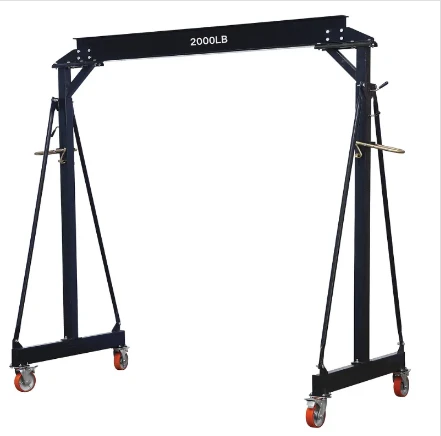below the hook lifting magnets
Understanding Below the Hook Lifting Magnets
In the world of material handling and logistics, efficiency and safety are of paramount importance. One innovative solution that has gained traction in this field is the use of below the hook lifting magnets. These powerful tools are essential for lifting and transporting ferrous materials, making them indispensable in various industrial settings. In this article, we will explore the functionality, applications, advantages, and considerations involved in using below the hook lifting magnets.
What Are Below the Hook Lifting Magnets?
Below the hook lifting magnets are devices that attach to cranes or hoists, allowing operators to lift ferrous materials without needing slings or chains. These magnets utilize electromagnetic or permanent magnet technology to create a powerful lifting force. They can be incorporated into various types of cranes, including overhead cranes, gantry cranes, and mobile cranes, to enhance their lifting capabilities.
Electromagnetic magnets generate a magnetic field when electricity flows through them, while permanent magnets rely on permanent magnetic materials that do not require an external power source. Both types have their specific use cases, and understanding the differences can help users select the right magnet for their needs.
Applications of Below the Hook Lifting Magnets
Below the hook lifting magnets are highly versatile and can be used across multiple industries. Common applications include
1. Steel and Metal Fabrication In facilities where steel sheets, plates, and rods are processed, these magnets play a critical role in lifting and positioning heavy metal objects safely and efficiently.
2. Automotive Industry Factories manufacturing automobiles often use lifting magnets for transporting parts and components during assembly, ensuring a seamless workflow.
3. Construction In the construction sector, lifting magnets assist in moving heavy steel beams and plates, improving site safety and productivity.
4. Recycling and Waste Management These magnets are instrumental in the recycling process for sorting and separating ferrous materials from non-ferrous items, ensuring effective waste management.
Advantages of Using Lifting Magnets
below the hook lifting magnets

The use of below the hook lifting magnets offers numerous benefits, including
- Increased Efficiency These magnets can lift large loads quickly and securely, reducing the time required for material handling tasks. Operators can often move materials in a single operation rather than using multiple slings and chains.
- Enhanced Safety By eliminating the need for manual lifting and securing of loads, lifting magnets significantly reduce the risk of accidents and injuries. They provide a secure hold, minimizing the chance of dropped loads.
- Versatility Lifting magnets can be used for a wide range of applications and are effective on various sizes and shapes of ferrous materials, making them suitable for diverse industries.
- Cost-Effectiveness Although there may be an initial investment in the purchase of lifting magnets, the long-term savings in labor costs, reduced injury claims, and increased productivity can be substantial.
Considerations for Use
While lifting magnets present many advantages, users should consider several factors when implementing them into their operations
- Load Capacity It is crucial to select a magnet with the appropriate load capacity for the intended application to ensure safe operation.
- Surface Condition The effectiveness of a lifting magnet can be affected by the surface of the material it is lifting. Dirt, rust, or other contaminants can impact the magnetic hold.
- Power Source For electromagnetic magnets, a reliable power source is necessary to maintain functionality. Operators must ensure that power cabling and connections are secure.
- Training Personnel must be adequately trained in the use of lifting magnets to maximize safety and efficiency. Understanding how to properly assess load conditions and utilize the equipment is essential.
Conclusion
Below the hook lifting magnets are transforming the landscape of material handling across various industries. Their ability to enhance efficiency, improve safety, and accommodate a wide range of applications makes them a valuable asset in modern industrial operations. As technology continues to advance, the role of lifting magnets will likely expand, offering even greater potential for innovation in the field of material handling.
-
Unlock Seamless Relocation with Our Heavy Equipment Moving ExpertiseNewsJun.06,2025
-
Unleash Unrivaled Flexibility with Our Adjustable Gantry CraneNewsJun.06,2025
-
Unleash Heavy-Duty Efficiency with Our Industrial Gantry Crane SolutionsNewsJun.06,2025
-
Revolutionize Steel Handling with Our Magnetic Lifter RangeNewsJun.06,2025
-
Master Equipment Mobility with Premium Machinery Mover SolutionsNewsJun.06,2025
-
Elevate Your Material Handling with Magnetic Lifter TechnologyNewsJun.06,2025
-
YS Permanent Lifting Magnets: The Smarter Way to Handle SteelNewsMay.22,2025
